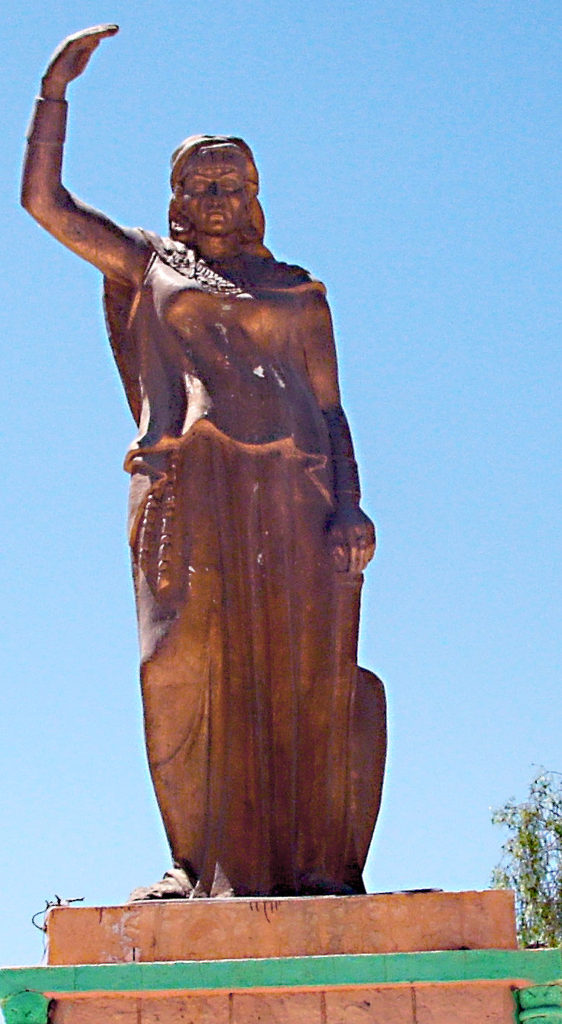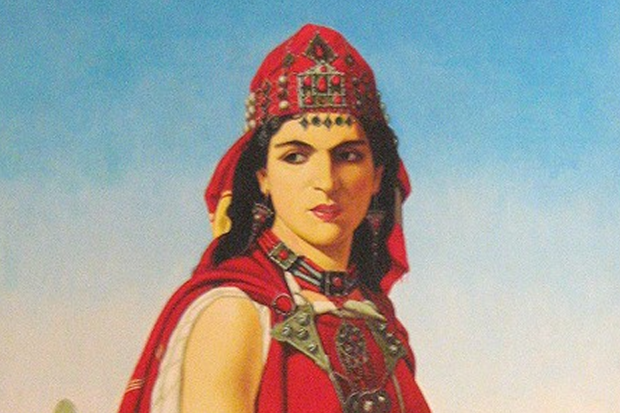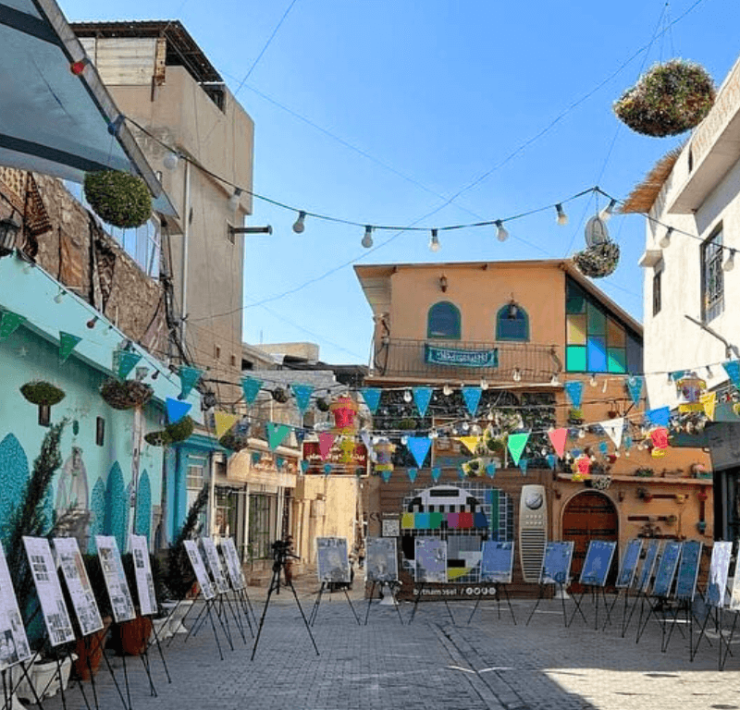This week we’ve teamed up with Amazing Amazigh to share the story of Dihya, the legendary Amazigh queen and warrior. Amazigh (or Imazighen) is the name given to the indigenous people of North Africa. They have also historically been referred to as ‘Berber’, although this word is highly problematic as it is derived from the name given to them by colonising forces, referring to them as ‘barbaric’. Scroll down to read all about Dihya’s role in the history of North Africa and how she became a symbol of Amazigh resistance and a Maghribi (North African) feminist icon!

Against the Arab invaders
Dihya, also known as the “Kahina” (meaning “seer” in Arabic), is an Amazigh queen and female warrior known to have fought and resisted the advancing Arab invasion between the 7th and 8th centuries CE, and even succeeded to push the Arab troops eastward beyond the borders of modern Libya. From a Judaized tribe (although her religion is debated) in the Aures Mountains (in modern Algeria), Dihya died in combat in 702 CE against the troops of Ibn Nu’aman [1]. Since then, she rapidly became a legend in the Amazigh memory.
The typical symbol of Amazigh resistance
Although little of Dihya is known as a historical character, Amazigh political and cultural activists have adopted her figure (physically present in Baghaï, Algeria) as a symbol of people who refuse to be subjugated, free and willing to fight to retain their freedom against outside invasion. Indeed, legendary figures such as Dihya are highlighted is a way to demonstrate that Imazighen have a deep history in the region prior to the arrival of the Romans, Greeks, and Arabs. Moreover, such imagery influences the performance of identity, especially gender roles, and contributes to a prevailing idea held by Amazigh activists that boldness, bravery, and the ability to serve as political leaders characterized Amazigh women in the pre-Islamic past [2].
The figure of Maghribi feminists
In fact, Dihya became a real icon in the Maghreb and an example of a strong historical female character. Many authors who wrote about the status of women in the Maghreb used the figure of Dihya to symbolise feminine resistance. That is the case of the feminist activist and lawyer Gisèle Halimi in her book La Kahina [3], Baya Jurquet-Bouhoune in Femmes algériennes : de la Kahina au code de la famille [4] and Denise Brahimi in Femmes arabes et sœurs musulmanes [5]. In these books, Dihya is a significative symbol for the liberation of women in the region in contemporary times, often discriminated against by unequal personal status laws.

Political instrumentalization of the myth
According to Hsain Ilahiane’s Historical Dictionary of the Berbers [6], the history of Dihya has been rewritten for diverse (political) causes such as Arab nationalism, Amazigh ethnic rights, feminism and even Zionism. By rewriting her story, each community voiced their own vision of North Africa’s history and Amazigh history more specifically to the point that it is today difficult to separate what comes from the myth and what are the historical and factual elements we can take into account. The scholar Mohammed-Saâd Zemmouri notes that “[if all writers claim without hesitation that historical and legendary figure, each of them constructs in their texts a personal imagery to which we can compare the imagery of a poet who elaborates a myth around a heroine]” [7].
In fact, some Arab historians advanced the story that Dihya at first opposed Islam, naming her systematically as the “Kahina” to discredit her as a sorcerer, but eventually asked her sons to adopt this new religion in order to demonstrate the inherent unity between Arabs and Imazighen. Another version of Dihya’s history has been told by the French historian and politician Ernest Mercier to legitimize French colonization by framing it as the liberation of Amazigh people from their Arab oppressors.
In any case, the complex figure and history of Dihya remains very present in the collective imagery of North Africa. Whether it is in Morocco, Algeria, Tunisia or Libya, Dihya is presented as a free, beautiful and bold woman. Her legend is still celebrated today through poems, literature and songs and many Amazigh girls proudly wear her name today.
This blog post was written for Pink Jinn by Tilila, the founder of Amazing Amazigh. Follow Tilila on Instagram at @amazing.amazigh.off for more historical and cultural insights into the Amazigh people.
[1] Alilat, Farid. « Algérie : sur les traces de Kahina, reine berbère symbole de la résistance amazigh », in Jeune Afrique (online), October 21st, 2013. Consulted in April 1st, 2021. URL : https://www.jeuneafrique.com/135818/societe/alg-rie-sur-les-traces-de-kahina-reine-berb-re-symbole-de-la-r-sistance-amazigh/
[2] Douider, Samira. “Deux Mythes Féminins Du Maghreb : La Kahina et Aïcha Kandicha.” Recherches & travaux (Université Stendhal-Grenoble 3. Equipe de recherche Traverses 19-21), no. 81 (2012): 75–81.
[3] Halimi, Gisèle. La Kahina, Plon, 2006.
[4] Jurquet-Bouhoune, Baya. J. Jurquet. Femmes algériennes : de la Kahina au code de la famille, Le Temps des cerises, 2007.
[5] Brahimi, Denise. Femmes arabes et sœurs musulmanes, Tierce, 1984.
[6] Becker, Cynthia. « Dihya : The Female Face of Amazigh History”, in Amazigh World News (online), November 2nd, 2015. Consulted on April 1st, 2021. URL: https://amazighworldnews.com/dihya-the-female-face-of-amazigh-history/
[7] Zemmouri, Mohammed-Saâd. Présence berbère et nostalgie païenne dans la littérature maghrébine de langue française, Publications de la Faculté des lettres et des sciences humaines de Tétouan, 2000, p. 97.






